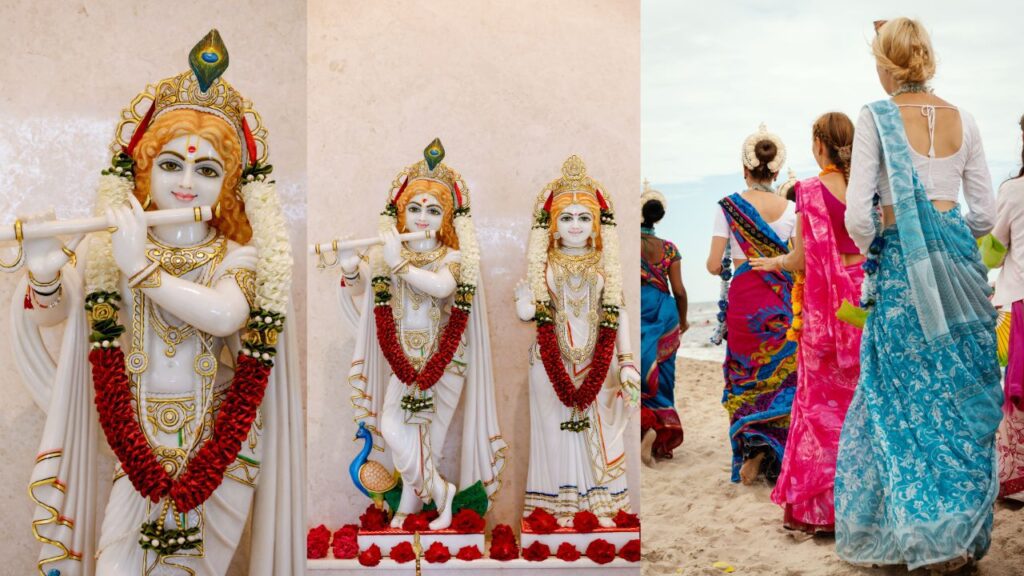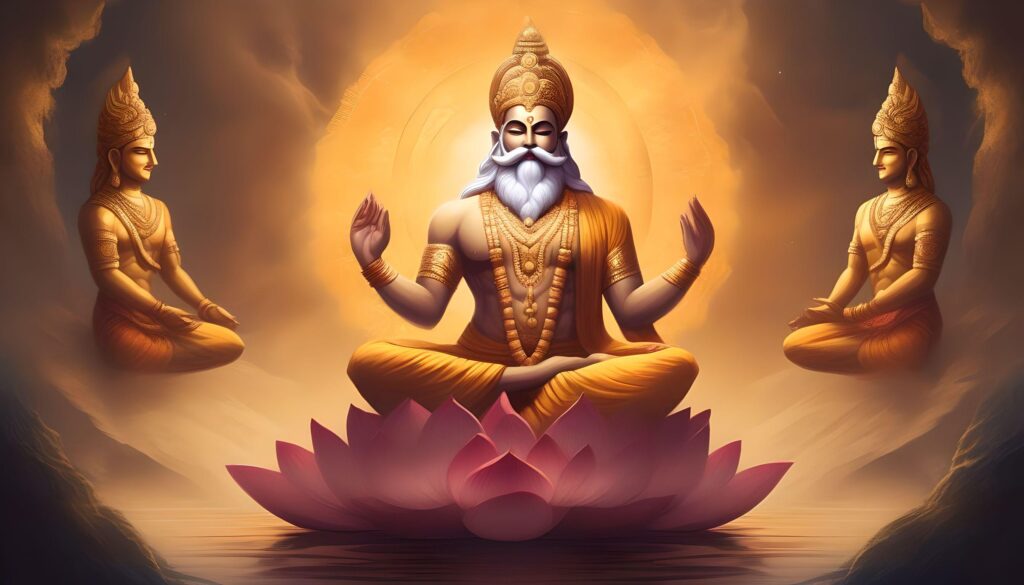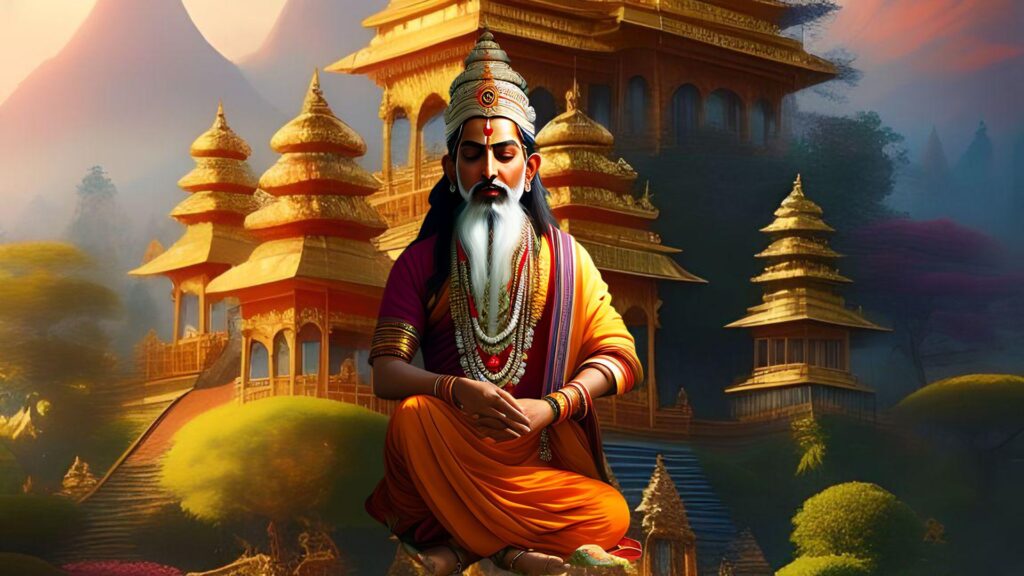Hinduism in the West: A Cultural Journey
Introduction
The Western world has been significantly influenced by Hinduism, one of the oldest religions in the world. This article delves into the historical trajectory of Hinduism in Western countries, elucidating its cultural influence, diaspora, and migration. Hinduism has significantly influenced the religious and cultural landscape of the Western world, from its origins in ancient India to its global dissemination.
The Origins of Hinduism
The Indus Valley civilization, which flourished around 2500 BCE in what is now northwest India and Pakistan, is the source of Hinduism. Over the course of thousands of years, the religion underwent a transformation that incorporated a variety of cultural, philosophical, and religious influences. The Vedas, a compilation of hymns and rituals, are the oldest religious texts in the world and serve as the bedrock of Hindu scriptures.
Hinduism in India: Colonial Period
Hinduism encountered substantial obstacles and underwent substantial changes during the colonial era. However, the British rule in India had a significant influence on Indian society, as well as on the Western world’s perception of Hinduism. The study of Sanskrit and the exploration of the rich philosophical and spiritual traditions of India by scholars and thinkers in the West began. Arthur Schopenhauer, a German philosopher, was one of the early advocates of Indian-inspired thought in the West, highlighting the spiritual self-conquest inherent in Hinduism.
Neo-Hindu Movements: 1950s-1980s
Through the emergence of neo-Hindu movements in the mid-20th century, Hinduism experienced a resurgence in the West. Swami Vivekananda and Paramahansa Yogananda were instrumental in the introduction of Vedanta and Yoga to the Western world. Swami Vivekananda, in particular, was instrumental in disseminating the teachings of Vedanta and Yoga at the World’s Parliament of Religions in Chicago in 1893. His message resonated with Western audiences, motivating numerous individuals to investigate Hindu philosophy and spirituality.
Hindu Migration to Western Countries
A substantial surge of Hindu migration from countries such as India, Pakistan, and Bangladesh to Western countries like the United States, the United Kingdom, Canada, and Australia commenced in the 1970s. Numerous Hindus escaped religious persecution in search of more lucrative economic prospects. This migration resulted in the establishment of substantial Hindu communities in these Western countries.
Hinduism in Western Countries: Population and Regions
Hinduism has experienced consistent expansion in Western nations, with a substantial portion of the populace now identifying as Hindu. 0.49% of the population in Western countries are Hindus, the number of whom is estimated to be around 6.8 million. The Hindu population in the United States is the greatest, with 3.3 million adherents. The United Kingdom, Canada, Australia, Italy, and the Netherlands are among the nations with substantial Hindu populations.
The Influence of Hinduism in the West
Hinduism has had a profound impact on Western culture, influencing a variety of aspects, including art, music, literature, and philosophy. In the Western world, the prevalence of practices such as yoga and meditation has increased significantly, with millions of individuals integrating them into their daily routines. Popular culture, which encompasses music, cinema, and fashion, contains Hindu-inspired elements.
Hinduism in Popular Culture
Various forms of media have featured references to Hindu deities, symbols, and practices, indicating that Hinduism has penetrated popular culture. The festival of colors, Holi, has become increasingly popular in Western countries, with lively events taking place in cities such as London and New York. Bollywood films, which are renowned for their depiction of Hindu culture, have also garnered a substantial following in the West.
Hinduism and the Western Diaspora
The Hindu diaspora in Western countries has been instrumental in the preservation and promotion of Hindu traditions and practices. In numerous locations, Hindu temples have been constructed to function as spiritual centers and community gathering places. These temples not only offer a site of worship but also provide instruction in classical Indian music, dance, and languages, thereby guaranteeing the transmission of Hindu culture to future generations.
Hinduism and Interfaith Dialogue
Hinduism has been actively involved in interfaith dialogue, which has fostered collaboration and understanding with other religious communities. Hindu organizations and individuals have engaged in interfaith initiatives to foster mutual respect and harmony. These interfaith endeavors have been influenced by Hinduism’s teachings, which emphasize nonviolence and respect for all living entities.
Challenges and Opportunities
Although Hinduism has established itself in the Western world, it continues to encounter obstacles and misconceptions. Misrepresentations in media and education are frequently the result of the persistence of stereotypes and misunderstandings regarding Hinduism. Nevertheless, Hindu communities persist in educating others about their faith, dispelling misconceptions and promoting a more comprehensive understanding of Hinduism.
Conclusion
The trajectory of Hinduism in the Western world has been characterized by cultural exchange, growth, and adaptation. Hinduism has become an essential component of Western culture, from its ancient origins in India to its migration and diaspora in Western countries. The diversity and pluralism of global society are enriched by the rich traditions and teachings of Hinduism, as Hindu communities continue to flourish and engage with the Western world.
#hinduism #west #outside #india









